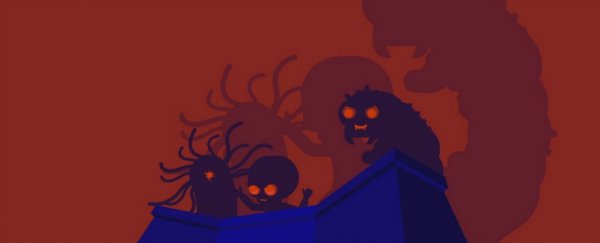Imagine you're touring Africa, enjoying the wildlife or trying to protect the rhinos, when you accidentally drink a cup of water that hasn't been properly sanitised.
You know drinking random water can make you sick – we've all played Oregon Trail – but you're thirsty from a long day of rhino-driven heroism and take the risk anyway. A few days later, you still feel fine and you continue to feel that way. It'd seem like you made it, right?
Then, after an entire year has passed from drinking that water, you find a weird blister on your foot with a small white bit sticking out. You give it a little pull, thinking it might be a pimple or something of that nature, but it keeps coming and you feel like your leg is on fire.
You have been infected with Dracunculiasis – often called Guinea-worm disease – and that small bit is actually the head of a metre-long (3-foot-long) worm that has wrapped itself tightly throughout the fibres of your leg tissue.
Oh, and the only way to get rid of it – drugs won't help – is to pull it out, little by little, over the course of several weeks.
While this seems ridiculous, horrifying, and almost other-worldly, it's just one out of a large group of parasites called neglected tropical disease (NTDs) that happen to be the subject of Kurzgesagt's latest YouTube video.
As the video above explains, NTDs are a big problem around the world, with one in seven people having some form of them (that's more than the entire population of Europe).
NTDs come in many different forms, from the terrifying worms described above, to amoeba, bacteria, and viruses.
Each of these different NTDs express themselves in different ways, but all of them are incredibly disgusting, painful, and possibly life-altering.
Some affect the intestines, causing them to be contracted. Some cause disfigurement, making it hard for sufferers to socialise. Others, like Dracunculiasis, seem to serve no purpose except to cause anguish in thier hosts.
But the good news, according to the video, is that humanity agrees that these monsters need to go, and they need to go fast, because no one should have to suffer from them.
In fact, we have a plan on the books to eradicate most of these gross creatures by 2020, an effort that has been spearheaded by pharmaceutical companies who have stepped in to distribute drugs to at-risk populations – usually those living in remote areas – for free.
By 2020, it's estimated that the pharma industry will spend over US$18 billion fighting these diseases, and they will not see a cent return on that investment. Yeah, that's how much we all collectively want these things to die.
And it's working. Take that nasty worm we mentioned earlier: in 1985, there were 3.5 million cases of people infected by it. In 2015, there were a mere 22, meaning we stopped roughly 99.999 percent of the disease.
And that's just one. The fight against NTDs has brought many scientific fields and businesses together to fight an all-out war against them.
So what's the next step and how is this war unfolding? Well, for that, we'll let Kurzgesgat explain in the video above.
